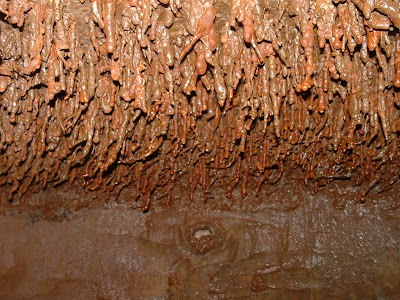Hot Water Storage Tank
 |
| Heavily Corroded Domestic Hot Water Storage Tank |
This is an image of an unmaintained, heavily corroded DHWST. This is bad news. When a tank reaches this stage it's likely that it can't be saved. At this point you'll be spending money to see how much you're going to have to spend.
So what's the next step?
1) This first step required is a UT (Ultrasonic Thickness) Test to determine the integrity of the vessel.
2) Results of the UT Test determine the next step:
- UT Test Pass - Tank can be prepped, relined and you're good for another 12-15 years with regular anode replacement.
- UT Test Fail - A Certified Pressure Vessel Authority (ie. BCSA, TSSA) would be required to determine the next step.
- Tank is condemned and tank replacement is required.
- Tank requires certified welders to weld buildups in specific areas to meet requirements and be approved for future service.
- Tank requires certified welders to weld in new sheets of metal in specific areas to meet requirements and be approved for future service.
5) Once the welding has been approved, a Hydrostatic Pressure Test is required to ensure the integrity of the welds, making sure there are no leaks.
6) Once the Hydrostatic Pressure Test has been performed, passed, and signed off by a certified Authority, the Domestic Hot Water Storage Tank can now be prepped, relined and you're good for another 12-15 years with regular anode replacement.
Tip: Don't let your tank get to this point.
Be proactive with these 3 simple steps:
- Perform regular anode replacement every 1-3 years depending on the quality of water.
- Reline you tank every 12-15 years.
- Repeat
Jason
Jason Rusnak
Director of Business DevelopmentProvincial Tank Lining and Inspections Inc.
C 519.387.2635
www.ProvTank.com
Provincial Tank Lining and Inspections Inc. Services Canada with Offices in Vancouver, British Columbia and Owen Sound, Ontario.
No comments:
Post a Comment
Note: only a member of this blog may post a comment.